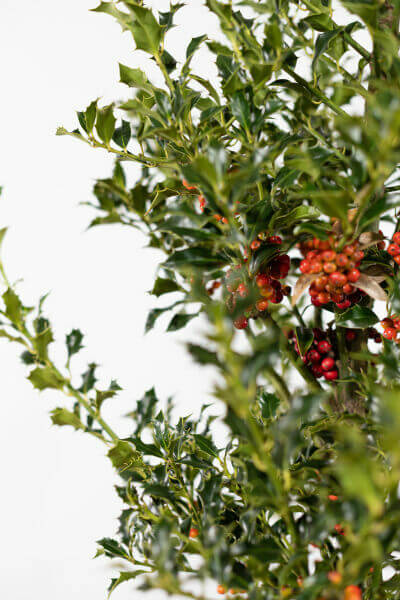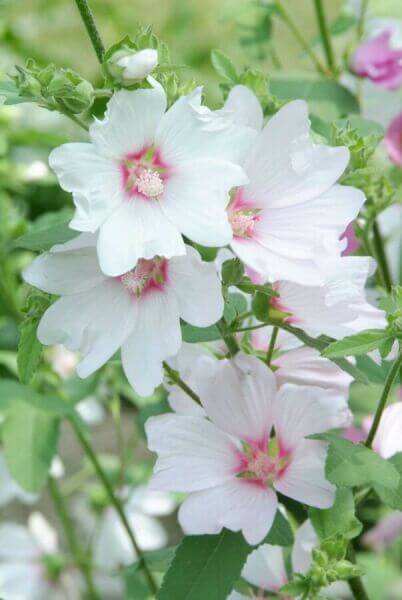Fast-growing Evergreen Hedge Plants
Fast-growing Evergreen Hedge Plants
Blog Article
Hedge Plants For Container Hedges
Boost your garden's attraction with lush hedge ranges such as Yew (Taxus), Thuja, Laurel, Photinia, and Bamboo, commemorated for their structural stability and environmental benefits.
Yew and Thuja supply evergreen coverage and winter strength, while Laurel offers fast growth and broad, aromatic leaves.
Photinia adds seasonal beauty with its vibrant red foliage, and Bamboo lends a low-maintenance, tranquil ambiance.
These hedges improve air quality, lower noise, and produce tranquil, personal spaces.
Appropriate planting, spacing, and upkeep ensure vigorous growth and ecological harmony.
Explore how these lavish ranges can elevate your garden's beauty and wellness.
Secret Takeaways
Transform Your Garden With Lush Hedge Varieties
- Select Yew for its dense, evergreen development and unparalleled longevity.
- Choose Laurel for its quick development and broad leaves, making sure fast privacy.
- Choose Photinia for its dynamic seasonal foliage, which turns a striking dark red.
- Use Bamboo for a low-maintenance, winter-hardy hedge with visual appeal.
- Area plants 2-3 per meter and prune frequently for optimum development and health.
Popular Hedge Plants
When changing a garden with lavish hedge varieties, it's vital to think about popular hedge plants such as Yew, Thuja, Laurel, and Photinia due to their special attributes and advantages.
Yew (Taxus) is extremely respected for its durability and thick, green growth, making it a prime option for sustaining landscapes.
Thuja is kept in mind for its evergreen foliage and robust winter season strength.
Photinia includes seasonal vibrancy with red leaves that darken with time, developing vibrant visual appeal.
Laurel uses fast growth and fragrant, broad leaves, suitable for fast privacy.
Furthermore, Bamboo is an outstanding choice for ambiance, offering a low-maintenance, winter-hardy alternative that boosts the garden's visual with its sophisticated, swaying walking canes.
These selections cater to a variety of horticultural needs and preferences.
Benefits of Garden Hedges
Garden hedges provide a wide range of benefits, making them an important addition to any landscape. These natural barriers are cost-efficient to execute and offer significant wind defense, improving air flow and adding to sound decrease. The dense foliage of hedges like Thuja and Beech makes sure personal privacy by obstructing presence, producing a peaceful and secluded environment.
Hedges also play a crucial function in microclimate regulation, supplying a stable environment that cultivates plant growth and minimizes temperature level fluctuations. Their complex leaf structures filter pollutants, enhancing air quality and contributing to a much healthier garden ecosystem.
Additionally, hedges master sound reduction, taking in and deflecting sound waves to lower ambient noise levels. This dual performance of offering both acoustic and visual privacy boosts the overall serenity and visual appeal of any garden.
Planting and Maintenance Tips
For an effective hedge, careful preparation of the planting area is vital. Ensure the soil has appropriate pH and drain to support strong root advancement.
Space the plants appropriately for the picked types. Water the hedge frequently throughout its preliminary development phase, adjusting as needed with seasonal modifications.
Carry out a systematic insect control and illness avoidance method, using chemical or organic treatments when needed. Frequently check for aphids, mites, and fungal infections.
Apply mulch to retain moisture and suppress weeds. Seasonal pruning promotes thick development and air blood circulation, necessary for plant health.
Following these guidelines will help you cultivate a vibrant, well-kept hedge that improves the charm of your garden.
Spacing and Cutting Standards
Spacing and Cutting Standards
Appropriate spacing and cutting are important for cultivating healthy, aesthetically appealing hedges. Sufficient spacing guarantees each plant gets adequate nutrients, light, and airflow.
Follow these guidelines for ideal hedge maintenance:
- Spacing: Position hedge plants 2-3 plants per meter to encourage robust growth.
- Pruning Techniques: Routine pruning is necessary for keeping wanted hedge height and shape. Cut brand-new growth in summer and cut back older wood throughout winter season.
- Seasonal Care: Change trimming schedules and techniques according to seasonal requirements to ensure plant health.
- Hedge Height: Frequently display and trim to maintain the desired hedge height and attain uniform aesthetic appeals.
Adhering to these actions will guarantee your hedge flourishes, enhancing both the appeal and performance of your garden.
Picking the Right Hedge
Selecting the Right Hedge
Selecting the proper hedge involves evaluating aspects such as mature height, foliage density, and environmental strength. Successful hedge plant choice needs understanding each types' growth characteristics and site-specific flexibility.
For example, Yew Additional hints (Taxus) uses outstanding longevity and thick growth, while Thuja is significant for its winter strength. Additionally, thinking about maintenance requirements is vital; fast-growing species like Laurel or Privet need regular cutting, whereas low-maintenance options like Bamboo or Ivy may be preferable for those looking for minimal upkeep.
Ecological factors such as soil type, light schedule, and moisture conditions must also direct the choice process. This cautious technique guarantees the picked hedges will thrive, offering both functional and visual benefits to the garden landscape.
Delivery and Planting Guidance
To guarantee your hedge plants thrive, they must be provided by specialized couriers and planted immediately upon arrival.
Follow these essential steps for successful planting:
- Soil Preparation: Improve the soil with raw material to improve drainage and nutrient material.
- Planting Depth: Develop a trench two times the width and equal to the depth of the root ball.
- Watering Techniques: Water thoroughly after planting, keeping the soil regularly damp however not filled.
- Mulching: Use a layer of mulch to retain moisture and suppress weeds.
Client Assistance and Service
Provided the vital function of prompt assistance in horticultural pursuits, our customer support team is offered six days a week through telephone, email, and social media to provide professional recommendations and promptly resolve any issues. Their devotion to fast action times makes sure consumer satisfaction by resolving queries related to plant health, optimum planting approaches, and upkeep schedules.

Action Time
Within 24 hr
This comprehensive support system, strengthened by an outstanding 9.3/ 10 client ranking, highlights our dedication to boosting the gardening experience for every single customer.
Frequently Asked Questions
How Long Does It Take for Hedge Plants to Establish?
Hedge plants generally require one to three years to become totally developed, with the specific period differing by types and growing conditions.
Efficient care throughout this vital period is important for robust growth. Consistent watering, alert weed control, and proper fertilizer application are essential in promoting strong root advancement.
For example, fast-growing species like Laurel may develop faster, while slower-growing ranges such as Yew might take longer. Diligent maintenance speeds up the facility process, resulting in thick and healthy hedges.
What Are the Best Hedge Plants for Privacy?
The concern of the very best hedge plants for privacy involves examining evergreen and deciduous alternatives.
Evergreen hedges like Thuja, Laurel, and Cypress offer year-round coverage, making sure constant privacy.
On the other hand, deciduous hedges such as Beech provide seasonal privacy, shedding leaves in cooler months.
Secret maintenance pointers for personal privacy hedges include routine trimming, fertilizing in spring, and correct spacing-- usually 2 to 3 plants per meter.
Additionally, constant watering and persistent weed removal are important for promoting healthy, dense development.
Can Hedge Plants Attract Wildlife to My Garden?
Yes, hedge plants can bring in wildlife to your garden by offering necessary benefits like shelter, food, and nesting websites, consequently enhancing regional biodiversity. For example, yew, holly, and laurel are outstanding for attracting birds, while ivy supports a range of insects.
However, it is very important to note that there are some disadvantages, such as increased upkeep to manage pests and routine upkeep. Carefully picking and maintaining hedge ranges can help balance these advantages and drawbacks, ultimately promoting a vibrant and sustainable community in your garden.
Exist Any Flowering Hedge Plants Available?
Yes, there are flowering hedge plants offered that can boost the appeal of your garden.
For example, Elaeagnus, also called Olive Willow, produces aromatic white flowers in the fall, adding a touch of elegance.
Photinia, another popular option, showcases lively red leaves that grow into a rich green, creating a dynamic visual impact throughout the seasons.
To make sure these plants grow, it's important to practice appropriate pruning methods and seasonal upkeep, such as cutting brand-new development in the summer season and cutting down in the winter season.
These measures will help maintain the health and aesthetic appeal of your flowering hedges.
How Do I Prevent Pests in My Hedge Plants?
To prevent insects in hedge plants, utilize natural insect control techniques and preserve appropriate hedge care. Introduce advantageous bugs like ladybugs, which take advantage of hazardous insects, to create a balanced ecosystem.
Regularly inspect your hedges for signs of infestation and promptly remove any afflicted parts to avoid the spread. Make sure the health of your hedges by applying balanced fertilizers and providing adequate water.
Make use of mulching to maintain soil wetness and appropriate spacing to reduce plant tension and promote robust development. These practices jointly help in minimizing bug concerns and preserving a healthy hedge.
Conclusion
In essence, selecting the right hedge ranges such as Yew, Thuja, and Laurel can change any garden into a peaceful haven. These plants supply year-round greenery, enhance visual appeal, and offer practical advantages like noise decrease and wind security.
Appropriate planting strategies, precise spacing, consistent watering, and seasonal cutting are important for optimal development.
Trustworthy delivery services and skilled client support guarantee a seamless experience from purchase to planting, making it easier than ever to elevate your outside space.
Garden hedges use a wide range of advantages, making them a valuable addition to any landscape. These natural barriers are cost-efficient to execute and supply considerable wind defense, improving air blood circulation and contributing to noise decrease. The dense foliage of hedges like Thuja and Beech makes sure privacy by blocking presence, creating a secluded and tranquil environment.

Pruning Strategies: Regular pruning is essential for keeping preferred hedge height and shape. Trim brand-new growth in summer and cut back older wood throughout winter.
Report this page